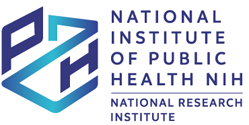Microbiological quality of gluten-free meals, naturally gluten free foods, and gluten free-labelled products
1
Chouaîb Doukkali University, Higher School of Education and Training, Science and Technology Team, El Jadida, Morocco
2
Hassan First University, Higher Institute of Health Sciences, Laboratory of Health Sciences and Technologies, Settat, Morocco
3
BIOMARE Laboratory, Faculty of Sciences, Route Ben Maachou PO Box 20, Chouaib Doukkali University, El Jadida, Morocco
4
Cadi Ayyad University, Faculty of Medicine and Pharmacy of Marrakech, Laboratory of Microbiology and Immunology, Marrakesh, Morocco
5
Laboratory of Epidemiology and Environmental Hygiene, Marrakesh, Morocco
6
Higher Institute of Nursing Professions and Technical Health, Marrakesh, Morocco
7
Cadi Ayyad University, Faculty of Medicine and Pharmacy of Marrakech, Pediatric and Diet Unit, Marrakesh, Morocco
Publication date: 2024-04-18
Rocz Panstw Zakl Hig 2024;75(1):13-20
KEYWORDS
ABSTRACT
Background: The rising prevalence of gluten-related disorders such as celiac disease explains the increased consumption of gluten-free foods (GFF). However, these foods must be safe in terms of both gluten content and contamination by pathogenic microorganisms in order to avoid food poisoning. Objective: The objective of this study was to assess the microbiological quality of gluten-free meals, naturally gluten free foods, and gluten free-labelled products. Material and Methods: We collected 62 GFF samples including 20 meals (M-GF), 22 naturally gluten free (N-GFF) and 20 labelled (L-GFF) products, which were investigated for microbiological contamination according to Moroccan regulations guidelines, issued by the International Organization for Standardization (ISO). The analysis consisted of the detection of Salmonella and Listeria monocytogenes in each sample, and the quantification of the microbial load of the following six micro-organisms: total aerobic mesophilic flora, total coliforms, fecal coliforms, Staphylococcus aureus, Sulphite-Reducing Anaerobic, and yeasts and molds. Results: A total of 372 analyses were carried out, showing a microbiological contamination rate of 5.1%. This contamination concerned N-GFF in 8.3% (predominantly with yeasts and molds), and meals prepared at home in 11.7 (predominantly with Staphylococcus aureus and coliforms). Only one case (0.8%) of contamination was observed in products labelled gluten-free and no contamination was noticed in meals prepared in food services. Listeria monocytgenes and Salmonella were not detected in any samples of food analyzed. These results indicate a good compliance of L-GFP and M-GF prepared in food services, while unsatisfactory quality was observed in N-GFF and M-GF prepared at home. Conclusion: Therefore, rigorous hygienic practices and adequate corrective measures should be considered by celiac patients, especially regarding the N-GFF and M-GF prepared at home.
We process personal data collected when visiting the website. The function of obtaining information about users and their behavior is carried out by voluntarily entered information in forms and saving cookies in end devices. Data, including cookies, are used to provide services, improve the user experience and to analyze the traffic in accordance with the Privacy policy. Data are also collected and processed by Google Analytics tool (more).
You can change cookies settings in your browser. Restricted use of cookies in the browser configuration may affect some functionalities of the website.
You can change cookies settings in your browser. Restricted use of cookies in the browser configuration may affect some functionalities of the website.



